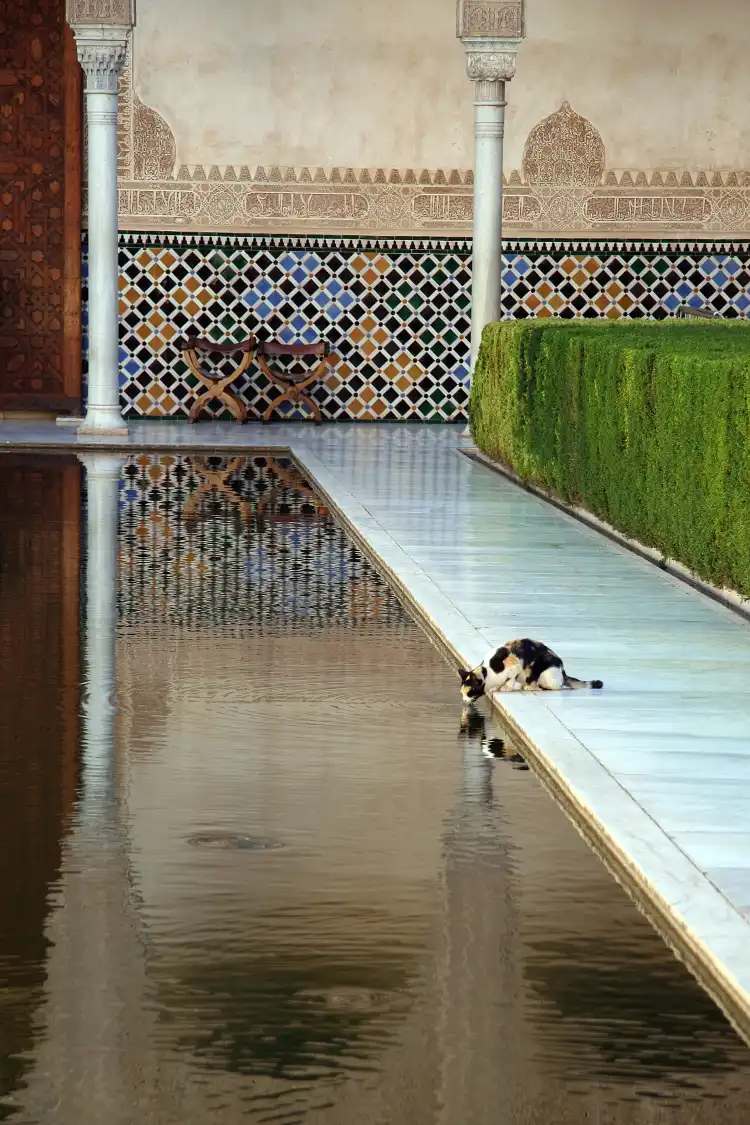
Search Granada Hotels
Enter your dates for the latest hotel rates and availability.
Swipe up to view more
Filter by:
Hotel Star Rating
≤2345
Popular Filters
Amazing 4.5+Great 4.0+Good 3.5+Pleasant 3.0+We found 1065 hotels for you in Granada
Choose your travel dates to see the latest prices and deals.
Most Booked
Lowest Price
Closest to Downtown
Highest Rated



Hotel near Centro,Granada 78.6% of visitors choose this area
GGuest User 2023.08.05
The room is quiet and tidy. The hotel is decorated with characteristics. The front desk service is warm and thoughtful. The location is good. It is convenient to walk to the lively neighborhood. Shopping and eating are convenient. It is within ten minutes' drive to the Alhambra.
Excellent
101 reviews
4.5/5
Price from
€82
per night


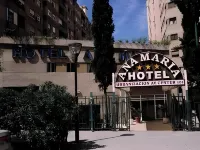
Hotel near Ronda District,Granada 1.8% of visitors choose this area
GGuest User 2022.12.09
The hotel was very comfortable and the hotel was very comfortable.
The air conditioning system is improved and the windows are isolated.
13 reviews
3.7/5
Price from
€35
per night



Hotel near Centro,Granada 78.6% of visitors choose this area
Eedna 2024.12.23
Muy buen servicio, es la segunda vez que vamos y genial como la primera vez. Volveremos siempre que vayamos a Granada.
Excellent
49 reviews
4.4/5
Price from
€51
per night

You Might Like
Hotels With BreakfastHotels With Twin RoomHotels With 1 Double BedHotels With Swimming PoolHotels With Free Cancellation
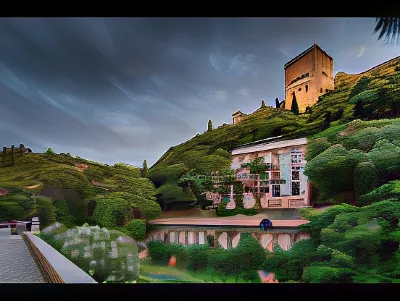


Hotel near Centro,Granada 78.6% of visitors choose this area
오오즈 2023.11.09
The location was really good -
From Granada Airport, take the Alsa Bus and get off at Cathedral Station, and the hotel is just across the street. Even though it is in an alley, it is not far from other downtown areas and is easily visible, making it easy to get around.
I didn't have high expectations from the moment I booked the accommodation.
It felt quite disappointing that there was no water in the room.
Other than that, the staff's guidance service was good, and because it rained on the first day of my stay, the temperature dropped significantly.
It seemed like the radiator in the room couldn't be operated by an individual. I felt like I would have to make a separate request if it was cold, but it wasn't too cold so I could handle it.
Looking at the location of the outlet and the overall structure of the room, it seemed like an old apartment/villa had been renovated and was being operated as lodging.
It's difficult to answer because I don't eat separately.
There aren't really any advantages other than the location, and there is a price advantage, but if I go to Granada again next time, I think I'll pay a little more and go for a better hotel.
Excellent
116 reviews
4.4/5
Price from
€68
per night



Hotel near Ronda District,Granada 1.8% of visitors choose this area
The Hotel Montecarlo provides a great place for travelers to relax after a busy day. The Hotel Montecarlo offers a pleasant stay in Granada for those traveling for business or leisure. Traveling to the hotel is easy with Granada Railway Station located approximately 2km away and Granada–Jaén "Federico García Lorca" Airport roughly 22km away. The nearby area boasts an abundance of attractions including Archaeological Museum of Granada, Royal Chapel of Granada and Basilica de San Juan de Dios. This hotel makes a great place to kick back and relax after a long day of sightseeing. When it comes to Granada hotels, the Hotel Montecarlo is highly regarded for its excellent facilities.
Outstanding
40 reviews
4.6/5
Price from
€67
per night
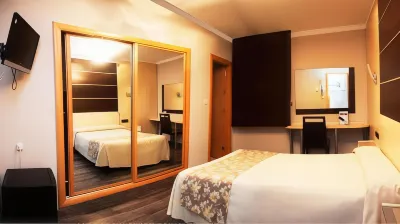
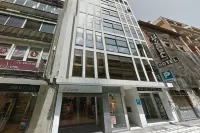

Hotel near Centro,Granada 78.6% of visitors choose this area
DDun 2025.01.06
Location close to the center, convenient for sightseeing. There is no problem with front desk support. The room had a shower, bathtub and desk, so I was able to spend a comfortable time during my stay.
57 reviews
3.9/5
Price from
€40
per night

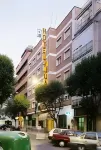

Hotel near Ronda District,Granada 1.8% of visitors choose this area
GGuest User 2022.07.14
We stayed several times in this hotel for a single night on the way to another destination, to enjoy the wonders of Granada. The location is good for us, the ease of parking at the door of the hotel in the blue zone, although there is a large paid parking lot next to the hotel. The hotel is very quiet, the price is very good but it is true that it needs some improvements in the facilities.
Very Good
103 reviews
4.2/5
Price from
€28
per night
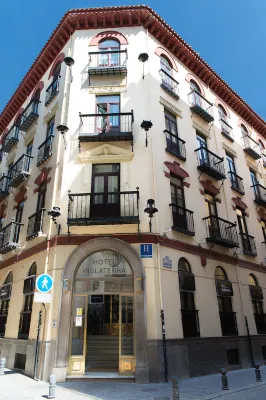
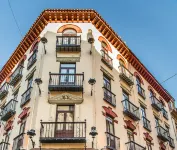

Hotel near Centro,Granada 78.6% of visitors choose this area
AAnonymous User 2024.02.06
Traveling to Granada is perfect for air and temperature. Walking warmly in the Alhambra to experience the weight of history. Hotel location is very good, the airport 3 euro bus to Granada main church to get off the picture two, the hotel is 100 meters away from the alley next to the walk to the viewing attractions and the Albaysin historical district. The hotel room can see the Alhambra Palace and the snowy mountains in the distance. The last three pictures were taken from the window. The room facilities are normal, the size is right, the price is cheap, the ventilation is very good, the bathroom has a large window, everything feels very summer. The disadvantage is that the elevator can go to the 3rd floor. The two floors behind carry the suitcase by themselves (I have already prepared it before booking). In addition, the first lady at the front desk is a little distracted by the bitter melon face. The three (after the shift) front desk staff are very friendly. Granada is a city worth visiting, and I found a Chinese food, especially delicious 😋
Very Good
115 reviews
4.2/5
Price from
€38
per night


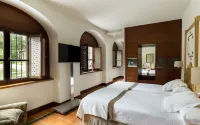
Hotel near Centro,Granada 78.6% of visitors choose this area
GGuest User 2022.09.16
Good location, in the Albuhan Palace Park, but after entering the room, I found that the cup has a missing corner and the sheets have small holes. If you are at the price of ㄧ NT$5,000 for one night, you should be able to provide better equipment.
Excellent
108 reviews
4.4/5
Price from
€264
per night
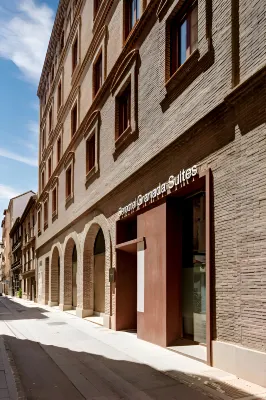
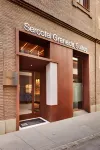
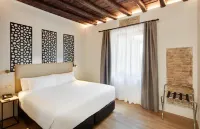
Hotel near Centro,Granada 78.6% of visitors choose this area
Yyuyu23 2024.07.26
I love Granada so much. The hotel is in a good location. It is very convenient to eat, drink and shop around. I have to praise the lady at the front desk of the hotel. She is very enthusiastic and tried to recommend all the delicious and fun places in Granada to us. She also helped us plan the route. You can see the Alcázar from the hotel's rooftop swimming pool. There is a paid parking lot, but you have to be very careful when driving there. The roads in Granada are too narrow and you will go the wrong way if you are not careful. We drove around in circles for an hour before we parked the car and tried not to drive again. It is better to choose public transportation or take a taxi to go to the Alcázar or the observation deck. Don't overestimate your ability to read navigation and drive.
Very very very satisfied. I especially want to thank the lady at the front desk.
We arrived a little late, and she deliberately extended the opening hours of the swimming pool so that the children could play in the water for a while. I am especially grateful to her. The room is a suite with a double bed and a sofa bed, which are separated by a wardrobe to form two spaces. You can cook but there is no washing machine. Overall very satisfied
Excellent
44 reviews
4.5/5
Price from
€86
per night

Top 6 Premium Hotels in Granada
See all
Discover our curated selection of premium hotels in Granada for your next stay

No.
1
4.7/5
80 reviewSeda Club Hotel - Small Luxury Hotels
Hotel near Centro, Granada
"Friendly owner""Great stay!"
Select dates to view prices
No.
2
4.6/5
111 reviewPalacio Gran Vía, a Royal Hideaway Hotel
Hotel near Centro, Granada
"Great service""Great stay!"
Select dates to view prices
No.
3
4.6/5
61 reviewAlhambra Palace Hotel
Hotel near Centro, Granada
"Great view""Great location"
Select dates to view prices
No.
4
4.4/5
69 reviewHotel Palacio de Santa Paula, Autograph Collection
Hotel near Centro, Granada
"Good Location"
Select dates to view prices
No.
5
4.4/5
54 reviewHospes Palacio de Los Patos Granada
Hotel near Ronda District, Granada
"Good Location"
Select dates to view prices
No.
6
4.4/5
34 reviewLa Corrala del Realejo
Hotel near Centro, Granada
"Good Location"
Select dates to view pricesLatest Reviews for Granada hotels
See all
Explore genuine reviews and ratings from real travellers to find the perfect accommodation for your needs.
4.7/5
Outstanding
YYiyufengqingThis is my favorite hotel throughout my trip to Spain, both in terms of environment and service. The color tone of the room is in the style of Gong, with red and blue colors, which is both warm and exotic. When I return to the room every evening, there are different fruits and snacks. When I return to the room at night, I also receive thoughtful care, including L'Occitane makeup remover wipes and hand cream. The breakfast is also very rich. You can also consider dining in the hotel for lunch and dinner. The quality is different from ordinary restaurants outside. Next time you travel, even to another city, it must be your first choice!
Seda Club Hotel - Small Luxury Hotels
Hotel near Centro, Granada 78.6% of visitors choose this area
Price per night from:€306
4.7/5
Outstanding
WWeipangjielideshouziThe room is quite big, and the bathroom has a big bathtub. I forgot to take pictures of the interior of the room, and it is not much different from the pictures provided by the hotel. It is very close to the Alhambra Palace, and it takes 3 to 5 minutes to walk to the Gate of Justice. The hotel service is also very considerate and helped us store our luggage.
Áurea Washington Irving by Eurostars Hotel Company
Hotel near Centro, Granada 78.6% of visitors choose this area
Price per night from:€99
4.6/5
Outstanding
GGuest UserLocation — On the hill, 10 min walk to the Alhambra Palace. If you fancy a short morning stroll in the same natural environment that surrounds the monumental complex, it should serve the purpose. Rooms on the city side have good views overlooking the Granada landscape, but prices are also much higher.
Service — Staff are very well trained and carry with them the old English-style professionalism and dignity, being polite but not condescending or ingratiating.
Amenities — Probably once modern during the first half of the 20th century, they are very old and out of date by today’s standard for a 5-star hotel. For example, the toilet is flushed by pulling (instead of pushing) the plug on the lid, something I’ve never seen in real life, but only in movies. Also the toilet had a bit of smell, not sure if it’s due to cleaning or in the pipes.
Overall, this hotel should suit visitors who look for classy service and/or an immersive experience of living in close proximity to the cultural complex and overlooking the Granada city as the emirs and kings did in the past.
Alhambra Palace Hotel
Hotel near Centro, Granada 78.6% of visitors choose this area
Price per night from:€273
4.6/5
Outstanding
LLeemaOne of the cleanest hostel I’ve ever stayed. It was beyond my expectation. In fact, it was super amazing. I would definitely come to TOC Hostel again if I ever come to Granada in the future.
I slept in a 4-Mixed dormitory. I was grateful to get to stay with good roommates. That’s a big plus. Also, they have a pool table for customers to enjoy and relax in the area. If you have luggages, there’s a lift you can take if you prefer. They provide a lock for your luggage to store in your room but a deposit of €10 is compulsory and they will return your deposit upon checkout. There’s also a washine machine and dryer should you need to wash your clothes. It cost €3.5 and €3 respectively. There’s a private bathroom in the room with hot shower, soap and shampoo.
Overall, it was an amazing stay for me and a solid 5/5!
Toc Hostel Granada
Hotel near Centro, Granada 78.6% of visitors choose this area
Price per night from:€10
4.5/5
Excellent
JJJI have been to many hotels. This one is definitly one of the best. Great service and staff - friendly and highly professional. Comfortable, quiet and clean rooms in this renovated hotel. Well located, nice authentic sourroundings, still in the Granada's center.
I like to check out different hotels. But if I go for Granada again I will choose this hotel - this is for sure.
Hotel Granada Center
Hotel near Centro, Granada 78.6% of visitors choose this area
Price per night from:€90
4.4/5
Excellent
AAira CharisDidn't expect this hotel is just a stone away from the main train station. Bus stops outside the hotel, surrounded with cafes, restaurants and easy to get taxi service. Free buffet breakfast was okay, same menu daily. Strictly 12nn check out no extensions not even 30mins or even if we are willing to pay extra they did not allow us even if the hotel ia not fully booked. Overall, we had a pleasant stay.
4.3/5
Excellent
GGuest UserThe English accent of the room brother is very interesting, and gave us a better room. At the top of the hotel, it is a room with a loft. There is a big bed upstairs and downstairs. The six-man star symbol can be seen everywhere in the hotel, maybe the store is Jewish. The rooms are clean and the decoration is simple and tasteful.
Most importantly, the hotel is located in the bustling new square of the city, next to the Albaising District, you can see the flow of people downstairs, and you can see the Alhambra Palace from afar. The location is excellent. Provided a wonderful end to our trip.
Hotel Plaza Nueva
Hotel near Albaicin, Granada 19.6% of visitors choose this area
Price per night from:€52
4.2/5
Very Good
GGuest UserThis Aparthotel was in an absolutely perfect location and easily accessible to the main sites of Granada. The communication with the customer support was excellent and it was easy to check in and out or get an early check in for an additional cost. The app was really useful as I could check in that way and had a note of my entrance key in case I forgot the number. The facilities, cleanliness and little extras provided such as water, coffee and crisps were really appreciated after a day of travel. The studio I was in was absolutely gorgeous, modern, clean and whilst in the centre of the town, quiet, so I could get a good night's sleep. The only thing that was a slight disappointment was that I booked the apartment thinking I would be getting a view of the town/square, but I did have balcony views over the balconies and into the apartments of the identical building directly in front of me. So, no view to speak of, but I didn't spend much time in the apartment as there was plenty to do in Granada. Overall, 4/5 for the experience and will be staying in the Libere again when next travelling to Spain.
Apartamentos Líbere Granada Catedral
Hotel near Centro, Granada 78.6% of visitors choose this area
Price per night from:€61
3.4/5
EEvangeliaGreat concept, good for photos. BUT our capsule no 7 was defective: the door was no locking, the key card holder was taped and so there was no good connection for electricity, and AC in the capsule was not working either. We had to sleep with the door open in order to be able to breath.
The door in the room is unlocked and everyone could enter. The patio is right next to the room, so there is a lot ot noise. People drinking until late and no one from the staff around to supervise. At around 2.30,drunk people entered in the room, a man started shouting and hitting a woman in the face, more people were involved and finally somebody called the police.
We felt super unsafe, especially without having the possibility to lock our capsule door.
Wouldn't go back.
Futurotel Space Spa Garden
Hotel near Centro, Granada 78.6% of visitors choose this area
Price per night from:€25
FAQs About Hotels in Granada
What popular hotels in Granada have parking?
If you're planning on driving to Granada, why not stay at
Catalonia Granada,Occidental GranadaandHotel Granada Center
? These are all popular hotels with parking lots.
At which popular hotels in Granada can I try local foods?
Those who like trying local foods might want to consider staying at
Hotel Andalucía Center,Senator GranadaandHotel Granada Center
. There are lots of famous restaurants serving local dishes near these hotels.
When travelling to Granada, which hotels have pools?
Summer is a great season to take your kids or family on a trip to Granada.
Dwo Urban Granada,Hotel SarayandCatalonia Granada
are popular hotels with pools.
Of all the hotels in Granada, which hotels have the highest user ratings?
When travelling to Granada for the first time, many travellers find it difficult to choose a hotel to stay in. According to Trip.com data,
Seda Club Hotel - Small Luxury Hotels, Apartamentos Turísticos Mauror and Solar MontesClaros
are popular hotels with high ratings, making them good choices for your trip.
At what hotels in Granada can I try local breakfast foods?
A delicious breakfast is a great way to kick start your day. At
Catalonia Granada,Dwo Urban GranadaandCasual Ilbira Granada
, guests can enjoy Granada-style breakfasts.
What popular hotels have non-smoking rooms in Granada?
Many guests care about the quality of the rooms they stay in and want to ensure that their rooms have fresh, clean air.
Arc House Granada,Porcel SabicaandHotel Granada Center
are all popular hotels in Granada with non-smoking rooms.
In Granada, what popular hotels have free Wi-Fi?
When staying at a hotel, Internet access is important for both vacationers and business travellers.
Casual Ilbira Granada, Hotel Andalucía Center and Dwo Urban Granada
are all popular hotels in Granada with free Wi-Fi.
What are the most popular hotels in Granada?
Whether you're travelling for business or going on holiday, there are many popular hotels to choose from in Granada.
Catalonia Granada, Hotel Andalucía Center and Arc House Granada
are all popular hotels to stay at.
What are some popular discounted hotels in Granada?
There are many popular hotels in Granada. You can find information on discounts and deals here: Trip.com Deals and Promo Codes.
In Granada, which popular hotels have gyms?
Based on Trip.com user ratings,
Senator Granada,Occidental GranadaandHotel Saylu
are highly rated hotels with gyms.
Granada Hotels Information
| Highest Price | €885 |
|---|---|
| Lowest Price | €28 |
| Number of Reviews | 10,218 |
| Total Properties | 3,234 |
| Average Price (Weekdays) | €147 |
| Average Price (Weekends) | €201 |